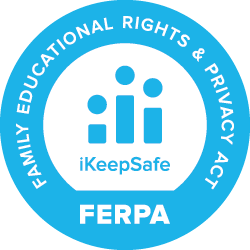DEV VERS - Recycling Representatives
This activity should keep you rolling along on the way to recycling.
Resource Title:
Recycling Representatives
Description:
This activity should keep you rolling along on the way to recycling.
Target Grade Level:
Grades 9-12
Discipline or Course (Audience):
Science
Time Frame:
Two 45-minute class periods without extensions
Suggested Grouping:
Pairs
Educator Prep:
Recycling is both good environmental stewardship and good business. In 2011 alone, more than 135 million metric tons of scrap metal, paper, plastic, glass, textiles, rubber, and electronics, valued at more than $100 billion, were manufactured into specification grade commodities by the scrap recycling industry in the United States. These commodities were sold as valuable feedstock material to industrial consumers in the United States and in more than 160 countries around the world. They contributed nearly $40 billion in export sales, significantly helping the U.S. trade balance. The U.S.-based scrap recycling industry is a sophisticated, capital-intensive industry that employs approximately 138,000 workers in the United States. As the first link in the manufacturing supply chain, scrap recycling has been integral to the U.S. economy, global trade, and resource sustainability.
But in many municipalities the potential for recycling is far from realized. Curbside collection of bottles and cans normally represents only the “tip of the iceberg” for what might be recovered. Part of the solution lies with public education. Another key is civic action. In most communities the government officials in charge of investing in new recycling facilities may not think “long term.” For example, they may look at the impact of a new recycling program on the budget for a month or a year, and ignore the long-term expense of building a new landfill when potentially recyclable materials fill the old one.
The slowly moving procedures used to manage local governments can be confusing and frustrating to students. But secondary students are ideally positioned to learn and participate in new initiatives.
This activity provides 14 potential roles. It works best if at least two students research the same role, using a “Think, Pair, Share” approach to discuss what a person in that role might say and what sources might be used as factual support for those positions.
The rubric that has been provided should be shared with students in advance. The most common pitfall in a role-playing activity like this is that students emphasize opinions rather than facts. The rubric doesn’t just describe research but also an emphasis on logic and factual evidence in conversations.
Preparation Directions:
- Divide students into pairs.
- Confirm students will have access to computers and Internet.
Remote Learning Adaptations:
This resource is appropriate for remote learning; no adaptations or modifications are necessary.
STUDENT CONTENT BELOW
Have you ever been to a city council meeting, school board meeting, or other gathering where people made important decisions for their community? What was it like, and what issues were discussed? You can get involved in public policy and express your concerns about the future of your planet.
Watch Web Link - Young Voices on Climate Change - Team Marine | YouTube to witness a group of students who were concerned about plastic bags and discover the civic action that the students used to change their community’s policies, including testifying at city council. Ask the students for reflections about the video. What was the issue? What did the students do? How did they hope to effect change? Were they successful in their mission?
Materials:
- Device with internet access
- Spreadsheet program
- Presentation program
Safety Notes:
- When using technology, engage in safe, legal, and ethical behavior; this applies to devices (hardware), application or programs (software), and interactions with others.
- There are no anticipated physical safety risks associated with this Activity.
Part 1: Developing a Two-Minute Statement
Explain to the students that recycling goes far, far beyond the bin at the edge of the curb. It is a billion dollar industry, which supports both environmental stewardship and the economy. In many areas the potential for recycling isn’t realized. Curbside collection of bottles and cans normally represents only the “tip of the iceberg” for what might be recovered. Part of the solution lies with public education. Another key is civic action. In most communities the government officials in charge of investing in new recycling facilities may not think “long term.” For example, they may look at the impact of a new recycling program on the budget for a month or a year, and ignore the long-term expense of building a new landfill when potentially recyclable materials fill the old one. Tell the students that in this activity, they will research and represent the interests of a variety of stakeholders in a recycling debate. As students prepare, reinforce the idea that each “voice” in this debate deserves respect.
- A petition has been filed with the county board that reads: We have in our files a petition from local residents to expand facilities for recycling in our county. Our budget is tight and our staffing is limited. This would be very difficult for us to do at this point. But we are willing to listen to the positions of citizens on this petition. The issue is that the county board has received a petition from local residents to expand facilities for recycling in our county. The budget is tight and staffing is limited. This would be very difficult for them to do at this point. They are willing to listen to the positions of citizens on this petition. Brainstorm as a class key components of making a persuasive and convincing argument in a debate. These might include organization, descriptive language, information based on data or evidence and a strong conclusion or call to action. Review the student rubric with the class.
- Assign each pair of students a Stakeholder’s Description Card. You and your partner have been asked to take on the role of the stakeholder that is described on the card that your teacher has given you. Tell students that they have the class to prepare a two-minute statement to present to the county board the next day. You will present a two-minute statement to the board the next day they meet in support of the petition.
- Carefully read and discuss the card provided by your teacher.
- Review the student rubric provided below. Keep these criteria in mind as you develop your statement.
- After developing your final statement, decide which of you will deliver it to the board and practice the presentation.
Stakeholder Description Cards
Owner of Party Store |
|
You are the owner of a small party store. You sell many products in glass, plastic or paper, batteries, and small electronics. Many of your customers use the products in the store. |
Owner of Manufacturing Plant |
|
You are the owner of a manufacturing plant that makes mouse pads from recycled rubber. If more rubber is available your raw material costs go down. |
Civil Engineer |
|
You are the civil engineer responsible for repairing a major turnpike in your area. The cold weather causes cracks, and the pavement is slippery in ice and snow. You want a better product to make your roads safer. |
County Budget Manager |
|
You are the budget manager of your county. You are evaluated each year on the year-end totals, but not on the long term expenses for the county. You are concerned about the life of the county’s landfill. |
County Board Chairman |
|
You are the Chairman of the County Board. You manage and evaluate all county departments, including sanitation and recycling, and are responsible for the budget. |
Manufacturing Worker |
|
You are a worker at a plant that manufactures composite (synthetic) lumber fences. This material is made from recycled plastics. |
Park System Manager |
|
You are the manager of the local park system. A significant part of your budget is spent hiring people to pick up glass, plastic, and metal containers. |
Mechanic |
|
You are a mechanic who regularly changes oil and batteries on cars. You also sell tires. You encourage your customers to bring their recyclables in but they don’t always do so. |
Grocery Store Owner |
|
You are the owner of a large grocery store. Most of your customers are used to getting plastic bags for their purchases. Very few of them bring them back for recycling. |
Artist |
|
You are an artist who makes glass dishes, containers, and decorations. You want a variety of different colors and qualities. |
Construction Manager |
|
You are a construction manager who builds athletic facilities for schools and communities. You would like the cost of recycled paving materials to go down. |
Economist |
|
You are an economist who reports to the markets on our nation’s job market and our balance of trade with other countries. Export of recycling materials is part of that report. |
Manager of Sewer System |
|
You are responsible for your county’s storm sewage system. In some cases, oil and other recyclable chemicals end up in that system and eventually in local waterways. |
Part 2: Presenting to the Board
Read the petition statement to the class to begin the hearing.
"We have in our files a petition from local residents to expand facilities for recycling in our county. Our budget is tight and our staffing is limited. This would be very difficult for us to do at this point. But we are willing to listen to the positions of citizens on this petition."
- After reading the petition statement, your teacher will call stakeholders to deliver their statement to the board. Have students present their statements to the class.
- As you listen to the other statements, take notes on the strengths and persuasiveness of their arguments. Have the listeners take notes on each of the statements. Encourage them to list the strengths of the statement and overall level of persuasiveness.
- As a class, vote as to whether or not there was enough compelling information presented by the citizens that would cause the board to fund the petition. As a class, vote as to whether or not there was enough information presented by the citizens that would cause the board to fund the petition.
Student Rubric
Criterion |
Weak |
Average |
Convincing |
|
Clarity |
The points are hard to understand. |
Each point is clear, but they aren’t all consistent |
The points made are clear and consistent. |
|
Accuracy |
The points are opinions. |
Points include some facts, but evidence isn’t cited. |
Points include strong facts with evidence to back them up. |
|
Relevance |
No effort to convince the audience why they should care. |
Some effort to convince the audience that the arguments are important to them. |
Strong effort to convince the audience that these arguments are important to them. |
Reflect and Apply:
With your partner:
- Evaluate each of the statements for strengths and weaknesses.
- Use the student rubric to evaluate and reflect on your statement. Discuss what changes you could incorporate to make your argument more compelling.
Students should be able to:
1. Make an argument about whether or not they support the expansion of their town’s recycling facilities based on their role as a stakeholder.
2. Evaluate each of the statements for strengths and weaknesses.
3. Evaluate their own statement, using the student rubric, and discuss what changes they would incorporate to make their argument more compelling.
Extension:
- Now that you have had time to reflect on the statements, incorporate the best arguments in this debate in a letter or email to your local governmental representatives. If this is not an issue in your community, research petitions that are being addressed by your local boards. Then, identify an issue, do the research, draft a persuasive statement and send it to your local representative.
- Journal Question: As you saw in Web Link - Young Voices on Climate Change - Team Marine | YouTube , a group of you students worked together on an issue that they were passionate about and made a difference. If you had the opportunity to work with such a group, what issue would you like to address with your local government? Why did you choose this issue? Do you think that your group could affect public policy?



